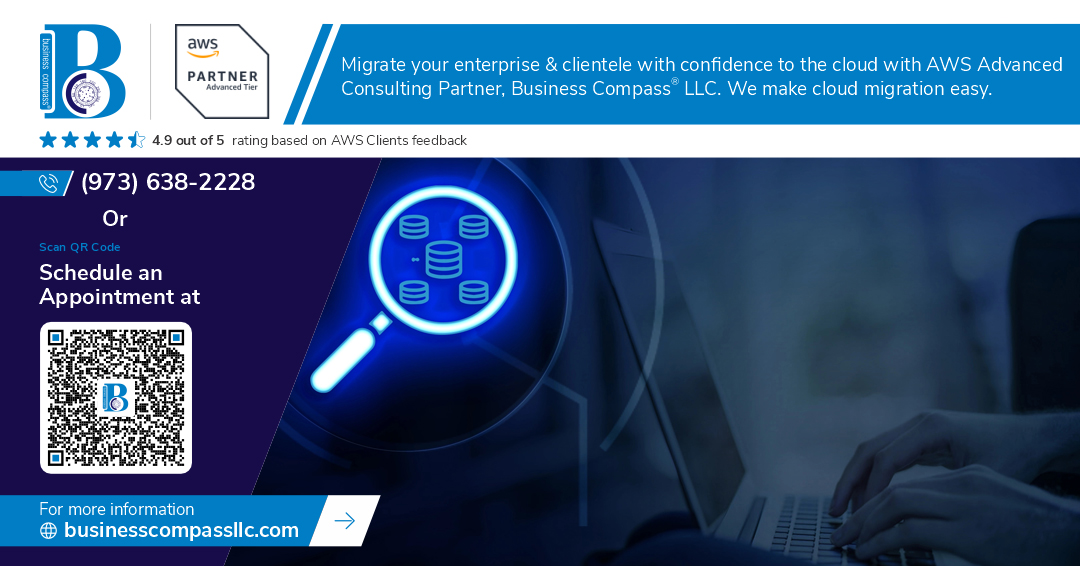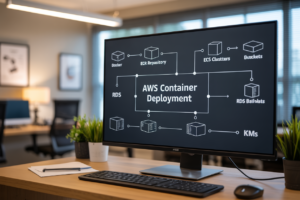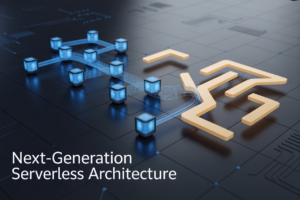Ever spent hours trying to reconcile data from your data warehouse with your data lake, only to find yourself drowning in complexity? You’re not alone. Organizations everywhere are struggling with this exact problem, which is why lakehouse architecture in Databricks has become the go-to solution for modern data teams.
Think of a lakehouse as the best of both worlds – combining the structured reliability of warehouses with the raw flexibility of data lakes. No more choosing between structured analysis or ML workloads.
What if you could get warehouse-level performance with lake-level costs? That’s exactly what we’ll explore in this guide to lakehouse architecture principles and best practices in Databricks.
But before we dive into implementation details, there’s something crucial most teams overlook when first adopting this architecture…
Understanding Lakehouse Architecture
The Evolution from Data Warehouses to Lakehouses
Data warehouses ruled for decades, but couldn’t handle today’s unstructured data explosion. Data lakes emerged to store everything but lacked reliability. Enter lakehouses—combining warehouse reliability with lake flexibility. Databricks pioneered this fusion, creating a single system that handles structured analytics and ML workloads without compromise.
Core Components of a Modern Lakehouse
Storage Layer
Raw data lives here in open formats like Parquet or Delta Lake, making it accessible across tools while maintaining ACID transactions. No vendor lock-in!
Metadata Layer
The brain of your lakehouse, tracking data lineage, schema evolution, and access controls. This layer makes your data discoverable and governable without sacrificing performance.
Processing Engine
Databricks’ unified compute layer lets data teams use SQL, Python, or Scala against the same data. Engineers build pipelines, analysts query data, and data scientists train models—all on one platform.
Governance Framework
Built-in security, auditing, and lineage tracking make compliance straightforward. Track who accessed what, when, and why—essential for regulated industries.
Benefits of Unified Data Management
Gone are the days of data silos and endless copying between systems. With lakehouse architecture, your data lives in one place while supporting diverse workloads:
- 70% reduction in infrastructure costs
- Near real-time analytics on fresh data
- Simplified data engineering workflows
- Direct ML on production data
- Self-service for business users
The cost savings alone make lakehouses compelling, but the operational agility is the real game-changer.
How Lakehouse Solves Traditional Data Architecture Challenges
Traditional setups forced painful trade-offs: performance vs. flexibility, governance vs. accessibility. Databricks’ lakehouse eliminates these compromises by:
- Unifying batch and streaming
- Supporting both BI and ML workloads
- Maintaining data quality while enabling exploration
- Scaling compute independently from storage
This approach ends the ETL tax—that painful cycle of copying data between specialized systems that created latency, increased costs, and introduced errors.
Fundamental Principles of Lakehouse Design
Fundamental Principles of Lakehouse Design
A. Transaction Support and ACID Compliance
Databricks lakehouse architecture isn’t just another data solution—it’s a game-changer that brings true ACID transactions to big data environments. No more worrying about partial updates or inconsistent reads. When multiple users modify data simultaneously, the system maintains integrity through snapshot isolation and versioning, giving you both reliability and performance without compromise.
B. Schema Enforcement and Governance
Think your data lake is a wild west of unstructured files? Not anymore. Schema enforcement in lakehouse architecture applies structure when needed while maintaining flexibility. Data teams can define and enforce schemas at write time, preventing garbage data from polluting your analytics. This balance of structure and flexibility is what makes lakehouses truly shine for governance without bottlenecks.
C. Decoupling of Storage and Compute
The old days of scaling both storage and compute together are gone. Modern lakehouse design separates these concerns brilliantly. Store petabytes of data cost-effectively in cloud object storage while scaling compute resources independently based on workload demands. This approach slashes costs during quiet periods and delivers maximum performance when you need it—exactly how cloud architecture should work.
D. Support for Diverse Workloads
One platform, endless possibilities. Databricks lakehouse architecture handles everything from batch processing to streaming analytics, SQL queries to machine learning workloads. This versatility eliminates the need for specialized systems for each use case, reducing complexity and integration headaches while ensuring consistent data access patterns across your entire organization.
E. Open Standards and Formats
Vendor lock-in is yesterday’s problem. Modern lakehouses embrace open standards like Delta Lake, Parquet, and Apache Spark. Your data remains portable and accessible through standard APIs and tools. This openness creates a vibrant ecosystem where best-of-breed tools can interact seamlessly, future-proofing your data architecture against changing technology landscapes.
Databricks Lakehouse Platform Explained
Databricks Lakehouse Platform Explained
A. Delta Lake as the Foundation
Delta Lake sits at the heart of Databricks’ lakehouse, solving the reliability issues that plagued traditional data lakes. It brings ACID transactions, schema enforcement, and time travel capabilities that let you query historical data versions – something your data engineers will absolutely love when troubleshooting goes sideways.
B. Unity Catalog for Centralized Governance
Unity Catalog isn’t just another governance tool. It’s your single control center for managing all data assets across your organization. Gone are the days of scattered permissions and security policies. Now you get fine-grained access controls, audit logging, and lineage tracking in one place. No more security headaches.
C. Photon Engine for Performance Optimization
Photon is where things get ridiculously fast. This vectorized query engine was built from scratch to squeeze every ounce of performance from your hardware. We’re talking 3-7x faster query speeds than previous engines. Data analysts who’ve been waiting minutes for queries to complete are suddenly getting results in seconds.
D. Integration with MLflow and Feature Store
The real magic happens when you connect Databricks’ lakehouse to MLflow and Feature Store. Data scientists can track experiments, package models, and deploy them to production while maintaining feature consistency. This tight integration slashes the time from model development to deployment from months to days.
Implementing Data Engineering Best Practices
Implementing Data Engineering Best Practices
A. Medallion Architecture (Bronze, Silver, Gold)
The medallion approach isn’t just fancy jargon – it’s your data quality lifeline. Raw data lands in Bronze, gets cleaned in Silver, and transforms into business-ready Gold tables. This progressive refinement catches errors early and builds trust. Your analysts will thank you when they’re working with pristine, validated Gold datasets instead of wrestling with messy raw files.
Analytics and BI on Lakehouse
Analytics and BI on Lakehouse
A. SQL Warehouse Optimization Techniques
Databricks SQL warehouses shine when properly tuned. Start by right-sizing compute clusters for your workloads – too small causes bottlenecks, too large wastes money. Cache frequently-accessed tables, partition large datasets wisely, and optimize your queries with explain plans. Auto-scaling configurations can dramatically improve cost efficiency during variable demand periods.
B. Building Reliable Data Products
Your data products are only as good as their reliability. Implement thorough data validation checks at each transformation stage. Version your datasets and tables to track lineage. Design with idempotency in mind so processing steps can safely re-run. Establish clear SLAs for freshness and quality, then monitor religiously. Delta tables with time travel capabilities make rollbacks straightforward when issues arise.
C. Real-time Analytics Implementation
Real-time insights separate leaders from followers in today’s market. Structured Streaming in Databricks makes implementing low-latency pipelines surprisingly straightforward. Connect to Kafka, Event Hubs or Kinesis for ingestion, then process with windowing functions to manage time complexity. Auto-loader handles incremental data efficiently. Remember that real-time doesn’t always mean milliseconds – define “real-time” based on business needs.
D. Dashboard Performance Tuning
Slow dashboards kill adoption no matter how valuable the insights. Pre-aggregate data where possible and materialize common calculation results. Limit visuals per dashboard to reduce load times. Use dashboard filters efficiently by applying them at the query level. Monitor query performance and look for opportunities to create specialized serving tables for your most important dashboards.
MLOps in Lakehouse Environments
MLOps in Lakehouse Environments
A. End-to-end ML Workflow Integration
Gone are the days when ML projects lived in isolation. Modern lakehouse environments in Databricks crush those silos, connecting data ingestion straight through to model deployment. You’re not just building models—you’re crafting entire pipelines that actually make it to production. The beauty? Everything happens in one platform, from ETL to model scoring, without the endless tool-switching headache.
Security and Governance Framework
Implementing Row-Level Security
Databricks’ row-level security lets you restrict data access based on user attributes. Simply define policies using SQL expressions that filter rows dynamically. This granular control ensures teams see only what they should, perfect for multi-tenant environments where data separation is critical.
Column-Level Access Controls
Control who sees what columns with Databricks’ column-level permissions. These controls mask sensitive data like PII from unauthorized users while preserving analytical capabilities. Implementation is straightforward through Unity Catalog’s permission model.
Data Lineage and Auditing
Track data’s journey from source to consumption with built-in lineage tools. Every transformation, job, and access is recorded, creating transparent audit trails for compliance reporting. This visibility proves invaluable during regulatory reviews.
Managing Secrets and Credentials
Never hardcode sensitive credentials in your notebooks. Databricks Secret Manager securely stores access keys, passwords, and tokens with encryption at rest. Access these secrets in your code without exposing sensitive information to users or logs.
Scaling Your Lakehouse Architecture
Scaling Your Lakehouse Architecture
A. Multi-cluster Workload Isolation
Stop letting mixed workloads kill your performance. Databricks multi-cluster isolation separates ETL jobs from BI queries, preventing resource conflicts. ML training won’t impact data science exploration anymore. Your data engineers will thank you when their pipelines run on schedule without competing for compute.
B. Cost Optimization Strategies
Cloud bills making you sweat? Autoscaling clusters can slash costs by 40-60% by spinning down idle resources. Spot instances work wonders for non-critical workloads. Cache frequently accessed data and implement storage tiering – hot data on premium storage, cold data on cheaper tiers. Monitor usage patterns religiously to eliminate waste.
C. Handling Increasing Data Volumes
Data volumes doubling every year? Been there. Partition your tables by date, region, or customer segments to keep query performance snappy. Implement Z-ordering for frequently filtered columns. Delta Lake’s compaction keeps small files in check. Consider data retention policies – not everything needs to live forever in your lakehouse.
D. Global Data Distribution Patterns
Global operations mean global data headaches. Databricks’ Unity Catalog provides consistent governance across regions. Consider data residency requirements early – they’re a pain to retrofit. For analytics, replicate aggregated datasets closer to users rather than raw data. Optimize cross-region data movement with batch transfers during off-peak hours.
E. Disaster Recovery Planning
Nobody plans to fail, but you better plan for failure. Implement cross-region replication for critical datasets. Document RTO/RPO requirements by data domain – not everything needs instant recovery. Test your DR procedures quarterly with actual restores. Databricks’ metadata backups preserve your table definitions, but verify your automation can rebuild workspaces when needed.
Lakehouse architecture represents a paradigm shift in data management, combining the flexibility of data lakes with the reliability and performance of data warehouses. Through this exploration of Databricks’ implementation, we’ve seen how proper design principles—from data engineering practices to robust governance frameworks—create a foundation for success. The integration of analytics, business intelligence, and MLOps capabilities within a unified platform enables organizations to extract maximum value from their data assets while maintaining security and scalability.
As you embark on your lakehouse journey with Databricks, remember that successful implementation requires thoughtful architecture decisions aligned with your organization’s unique needs. Start with a clear governance strategy, implement best practices for data engineering workflows, and leverage Databricks’ powerful tools for analytics and machine learning. By following these guidelines, you’ll build a scalable, secure lakehouse architecture that transforms how your organization leverages data for competitive advantage.




















